If you’re a history lover like me London is a treasure trove. This is a city with 1000 years of history in its streets and every century has left stories for you to discover. Not only are there world famous historical places in London, like Westminster Abbey and the Tower of London, but the city is packed with smaller reminders of the past that are still a part of its day to day life.
And it’s constantly evolving too. London honours the past but isn’t afraid to look to the future – one of the reasons visitors can’t get enough of it and return, time and time again.
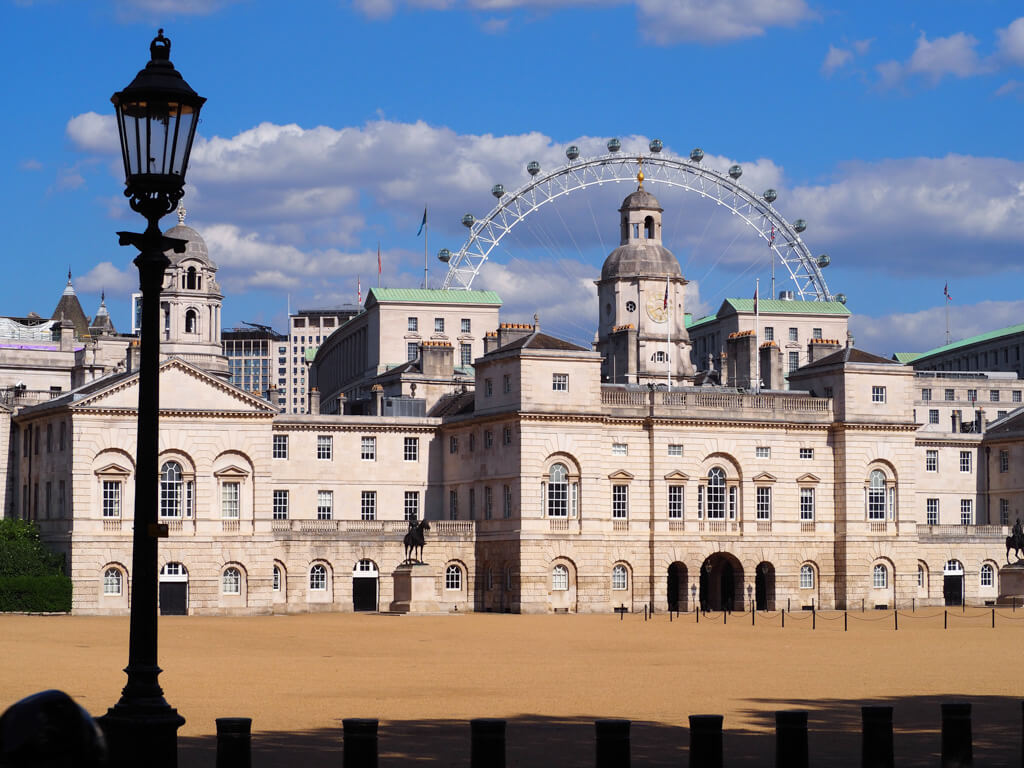
This post contains affiliate links, this means that I may receive a commission at no cost to you if you click a link and make a purchase.
40+ historical sites in London – and why you’ll want to see them
I’ve lived in London all my adult life and I’m still discovering new sights and experiences here. My top tip for a history lover coming to London is to get to grips with how the city’s grown up. That way you’ll understand London’s layout from the get go, and the historical context of its most famous sights will all fall into place. Instead of being a sprawling, overwhelming metropolis London will make sense to you from your first day.
Getting to know the history of London
You can’t properly enjoy the amazing historical sites in London if you don’t know some of the stories behind them. So this post is a virtual trip around London and across the centuries: from Roman London to the Coronation of King Charles III in 2023. I’m highlighting over 40 famous historical places in London that are an integral part of the city’s story.
Fascinating, beautiful, awe-inspiring: you’ll want to fit at least some of these into your London itinerary. You certainly can’t do them all in one day! But I’ve arranged them by neighbourhoods so that you won’t miss out on any famous sights when you’re in the area.
If you’re a serious history enthusiast I’d allow half a day at least for each neighbourhood. You can follow my route around London – and the city’s history through time – on the map I’ve linked to here:
By the way, when you’re planning your visit to London and your itinerary it’s worth calculating whether a London Pass will save you money, check it out here.
Historical Places in London Map
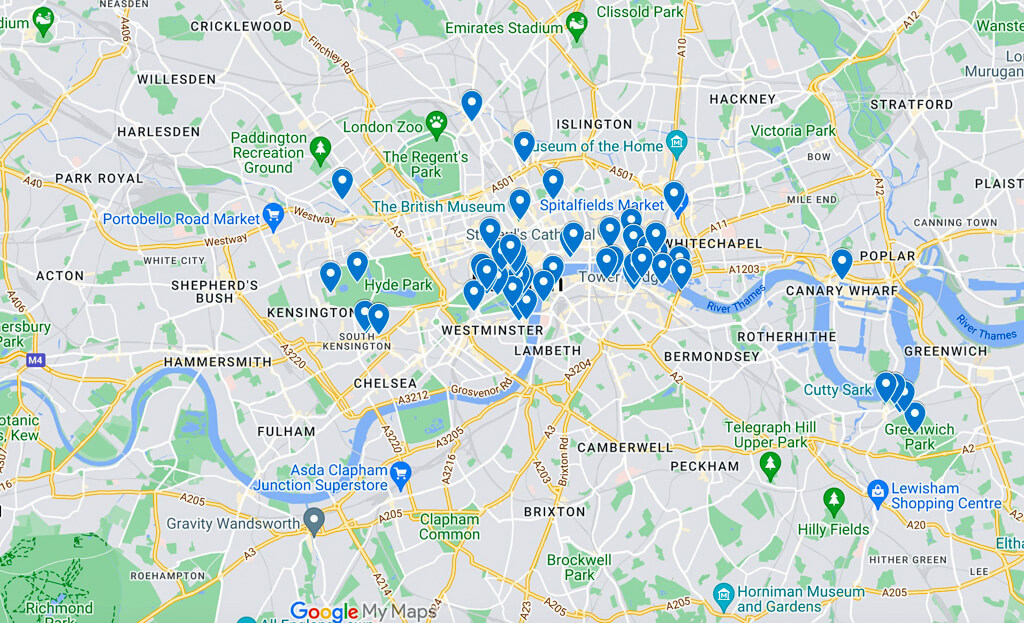
Click here for an interactive map of historical places in London.
The River Thames
The Thames has been key to London’s development: as a source of food, water, transport and trade. As you can see in the map, the river Thames runs through London like a snake. It rises in Gloucestershire and enters London from the west, passing Windsor Castle and Hampton Court Palace and meandering on into the city via Fulham and Chelsea. It flows past the Tower of London, carries on east through London’s former docklands, then passes Greenwich and the O2 Arena, finally meeting the sea at Tilbury in Essex.
Obviously the river Thames was here first – so you can see how London’s districts and landmarks have grown up around it over the centuries.
The Thames divides London into two. The major part of London, from a visitor’s point of view, lies to the north of the Thames. Don’t discount the south though! Lots of London life – commercial and creative – takes place south of the river. It’s just that from a visitor’s perspective, with very limited time, many of the sights you’ll want to see are grouped to the north.
Roman Historical Sites in London
We’ll start where the Romans began when they first invaded England in AD 43. They settled on the north bank of the Thames, choosing a spot where they could build a bridge across the river as a supply route. London Bridge today, 1000 years later, is in the same area.
Londinium grew up to be a large Roman town with a fort, amphitheatre and grand public buildings and houses. But by the 4th century Roman power was waning. Parts of Londinium had already been destroyed and, once the Romans left, the city seems to have been abandoned.
It wasn’t until four centuries later that the Anglo Saxon King Alfred took an interest in it. Then in 1016 King Canute made London his capital in preference to the Saxon’s favoured city, Winchester.
Not much evidence of Roman times in London is left for us to see. But occasionally excavations in the City of London reveal tantalising glimpses of Londinium, buried beneath the contemporary city.
London Wall
Fragments of Roman wall remain and you can see a good chunk of it, dating from AD 200, on Tower Hill.
Roman Amphitheatre
A Roman amphitheatre is hidden away under Guildhall yard in the City. Rediscovered in 1988, you can now visit its underground remains in a display that’s incorporated in the Guildhall Art Gallery. Entry is free.
London Mithraeum Bloomberg SPACE
The Roman temple of Mithras was discovered during construction in 1954, moved to another site and then returned to its original home 50 years later. It’s seven metres below street level and has its own exhibition space.
Billingsgate Roman Baths
This original Roman bath house was once part of a large private house and is hidden away in the basement of an office block. It’s worth booking tickets to visit.
London’s Castle
I’m skipping swathes of history here to reach that important date to all Brits – 1066. The French king, aptly known as William the Conqueror, won the Battle of Hastings and moved into Great Britain.
The 11th century Norman conquest has been the last successful invasion of England. And William started as he meant to go on by building a series of castles to assert his power. Since London was already a centre of government and had a thriving port, it made sense for William to build a huge fortress here, the Tower of London.
These days the Tower is dwarfed by skyscrapers. But for centuries it was the biggest thing on the skyline and loomed threateningly over Londoners from its defensive position on the banks of the Thames.
The Tower of London
Looking like a fairytale castle poised between a forest of high rises, the Tower of London is a UNESCO World Heritage site.
As well as being a royal palace it has been a fortress and notorious prison. This is where Ann Boleyn, Henry VIII’s second wife, was beheaded whilst nearby Tower Hill was the scene of many more executions over the centuries. Nowadays it holds the priceless collection of Crown Jewels and the historic royal armoury. The Tower’s warders, ‘Beefeaters’, entertain visitors with tales from the Tower as well as their deep knowledge of this key historical site in London history.
The best historical tour to take of the Tower of the London is, without doubt, The Ceremony of the Keys. But you must book well in advance! It’s a spine tingling experience to see this solemn ritual re-enacted as it has been done for 100s of years.

Historical Places in the City of London
As with all great cities, the history of London revolves around power and money. And for centuries the crucible of both in London has been the City of London.
In 1066 most of the settlement of London lay close to the Tower in the area we now call the City of London.
I know! The metropolis of London is obviously a city, small c, but the term City of London, refers specifically to our financial district. It’s usually called ‘The City’ and sometimes ‘The Square Mile’ because that’s how small it is.
Within the City footprint you’ll find St Paul’s Cathedral, the Royal Exchange, the Bank of England and a large part of London’s legal profession including Middle Temple, Inner Temple and the Old Bailey court. So you can see that the City of London had religion, commerce, finance and the law all sewn up for centuries.
In 1666 the Great Fire of London ravaged the City. It burned for five days and destroyed all the wooden medieval buildings in its path, including the original St Paul’s Cathedral. More than 13,000 houses and 87 churches were lost. The city was re-built in brick and stone and with wider streets to avoid the risk of another fire catching hold.
It retained a similar form for centuries until World War II. During the eight month period of the Blitz sustained bombing destroyed 70,000 buildings and damaged more than 1.5 million others.
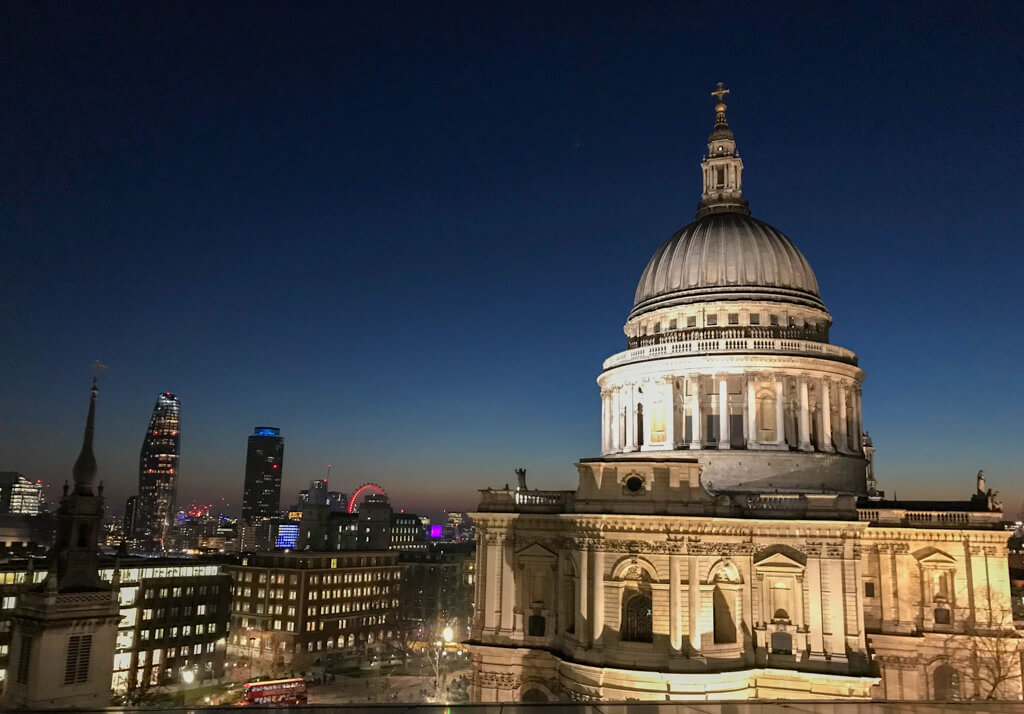
St Paul’s Cathedral
Sir Christopher Wren was a key figure in the re-building of London after the Great Fire and was the architect of the ‘new’ St Paul’s Cathedral.
The beautiful dome of St Paul’s is still a London landmark despite the skyscrapers all around. Climb to the top for wonderful views and compare it to the Old Naval College in Greenwich – another Wren masterpiece.
Book ahead for skip the line tickets to St Paul’s Cathedral.
Inns of Court
If you’re in the City, take a few minutes to step away from the bustle of Holborn into the deceptively peaceful cobbled lanes and gardens of Middle and Inner Temple. These are two of London’s Inns of Court, dating back to the 14th century, which initially provided accommodation for young lawyers, hence Inns, and also handled their education. These two occupy the site around Temple church, formerly used by the Order of the Knights Templar. Today the Inns of Court are an integral part of the British legal system.

The Monument to the Great Fire of London
A viewing platform for 18th century Londoners, The Monument is still an exhilarating experience, partly because of the 311 steps you climb to reach the top. The sense of achievement is as good as the view though and you’re literally following in the footsteps of Sir Christopher Wren.
Leadenhall Market
Made world famous by Harry Potter, there’s been a market in these parts since the Roman forum. Come for food, drink and the soaring Victorian iron and glass arcade. And see if you can spot the entrance to the Leaky Cauldron.
Historical Places in City of Westminster
Now for politics. On Christmas Day 1066, about a mile up river from the Tower of London, William the Conqueror was crowned in Westminster Abbey. The royal palace of Edward the Confessor lay close by, again strategically placed beside the river.
William’s son, William Rufus rebuilt this palace and it became the largest hall in Europe. England’s first parliament met here in Westminster Hall in 1295. A couple of centuries later King Henry VIII moved his residence to Whitehall but the Parliament stayed at the Palace of Westminster. Where it still is.
The Palace of Westminster and the area around it grew in power and influence over the centuries and in 1540 the borough of Westminster was awarded city status. Yes, it’s another City within a city.
The City of Westminster area reaches to Camden. The centre of government in London, the area around the Houses of Parliament, is also known internationally as ‘Westminster’.
Here is the political and cultural heart of London and you’ll find many of our major landmarks close by. Big Ben of course, but also Whitehall and Downing Street, Trafalgar Square and the National Gallery, Buckingham Palace and St James’s.
Westminster Abbey
Edward the Confessor built the Abbey in the Middle Ages. And since 1066 every British monarch has been crowned here, including His Majesty King Charles III in 2023. Monarchs, poets, scientists and politicians are all buried in this important historical site of London. Plus the architecture is absolutely breathtaking.
Palace of Westminster and Big Ben
The Palace of Westminster is home of the Houses of Parliament where UK laws are debated. The oldest part is Westminster Hall where Her late Majesty Queen Elizabeth II lay in state in 2022.
The northern clock tower, or Elizabeth Tower, is the one that’s recognised around the world as Big Ben. You can see the exteriors easily from Parliament Square and Westminster Bridge.
Whitehall, Downing Street and Churchill War Rooms
Just up the road from the Parliament buildings you’ll find more of London’s historical places of government. Whitehall is the name of the road and also the area linking Parliament Square to Trafalgar Square. It contains plenty of government buildings including the traditional home and offices of the Prime Minister at No 10 Downing Street. But heavy security these days means you can’t get up close.
The Cabinet War Rooms are here in King Charles Street and they are a must visit if you love history. This claustrophobic warren of underground offices was the nerve centre of former Prime Minister Sir Winston Churchill’s World War Two campaign. History comes viscerally to life here.
Back on Whitehall, Banqueting House is all that remains of King Henry VIII’s Palace of Whitehall. Whilst the Horse Guards building opposite was constructed on a courtyard that Henry used for jousting. And you can watch part of the Changing of the Guard ceremony here on Horse Guards Parade, with fewer crowds than at Buckingham Palace.
Trafalgar Square and the National Gallery
At the top of Whitehall stands Lord Nelson, victor of the great sea battle of Trafalgar where he lost his life. He stands on a tall column, flanked by lions, in one of the most recognisable historical places in London. Trafalgar Square at Charing Cross is the centre of the city.
Behind Nelson is the grand facade of the National Gallery with its world-beating collection of art. And it’s one of the many free museums in London! Stop here to see Van Gogh’s Sunflowers and the Rokeby Venus.
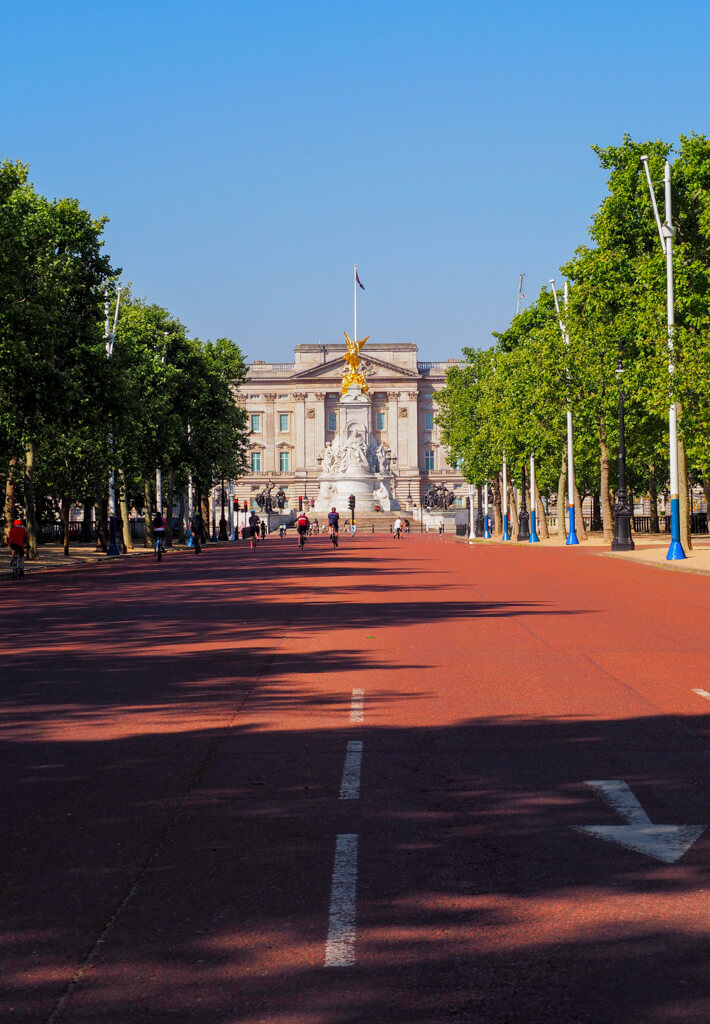
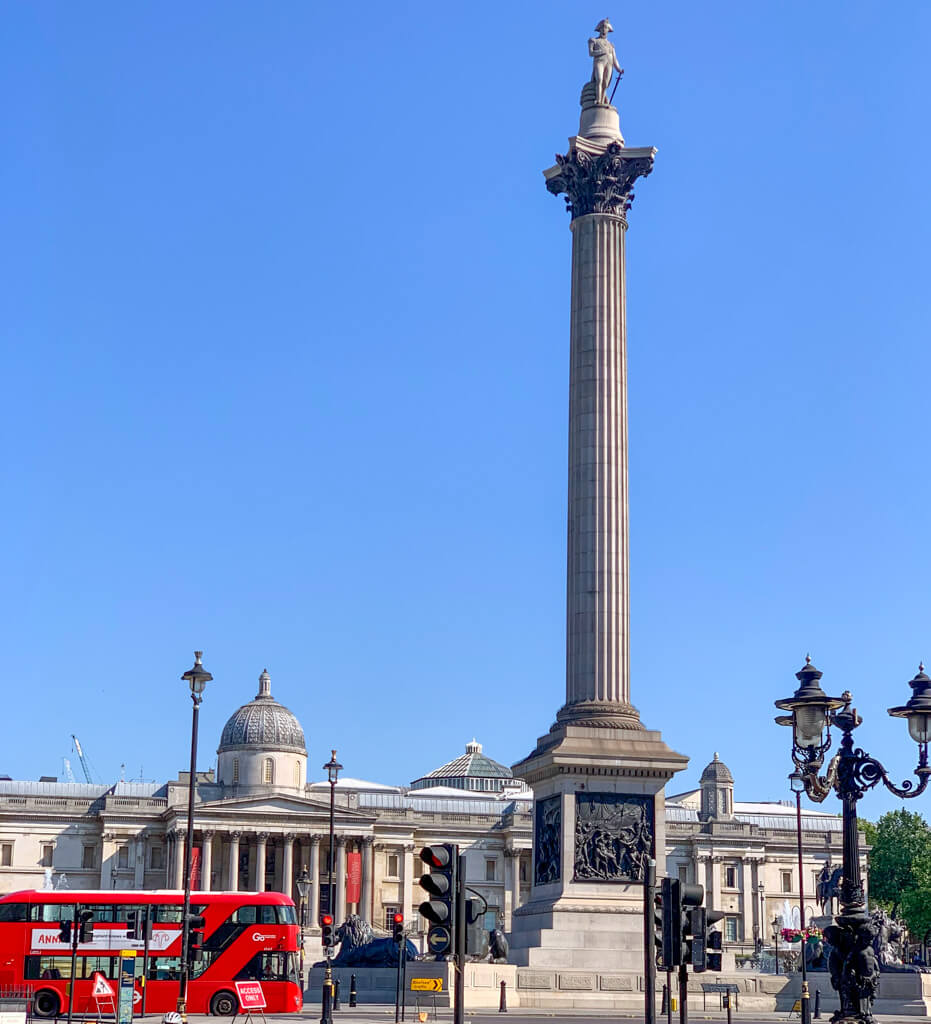
Buckingham Palace and St James’s Palace
Whitehall and Horse Guards Parade lie on the edge of St James’s Park. On the opposite side of the park is Buckingham Palace whilst The Mall, a grand and ceremonial roadway, links Trafalgar Square to the Palace.
Along the Mall is St James’s Palace which was built for Henry VIII in medieval times. Nowadays it’s still a working palace and home to members of the Royal family. It’s also one of the few remaining Tudor buildings in central London so it’s worth a visit to Marlborough Street to have a look at its exterior.
Buckingham Palace itself wasn’t originally built as a royal residence. It was a big house re-designed in the 18th century for the Duke of Buckingham. Later, King George III bought it as a home for his wife and children as it was handy for the court at St James’s Palace. Then in 1837 Queen Victoria moved in, cementing its credentials as a primary royal residence.
During the summer months you can visit the state rooms of the Palace and, all year round you can watch the pageantry of the Changing of the Guard ceremony in front of the Palace and along the Mall. It is also the perfect setting for the pageantry of Trooping the Colour in London in June.

Historical Places in Bankside
Now let’s head south of the river and back to the area around London Bridge called Bankside.
As London Bridge was the only means of crossing the Thames, the Bankside area around it was the gateway to London from the south of England. You can still visit Borough Market here, as well as the reproduction of Shakespeare’s Globe theatre.
You can also see more contemporary sights such as the world famous Tate Modern gallery which opened in a redundant power station, and two historic ships: HMS Belfast and the Golden Hinde.
Newer river crossings include the iconic Tower Bridge to the east and the curvy Millennium Bridge which crosses the river between Tate Modern and St Paul’s.
Tower Bridge
Handsome Tower Bridge was beamed across the world when the UK hosted the 2012 Olympic Games. It is an instantly recognisable historical place in London but it’s also part of the fabric of the city. Crossing Tower Bridge is part of the daily commute for 1000s of Londoners. Though traffic and pedestrians have to wait occasionally when its roadway opens to allow large ships to pass along the river Thames.
It’s worth doing the Tower Bridge Experience tour which gives you insights into the extraordinary skills of its Victorian builders. Plus great views along the river as you cross the glass-floor walkway.
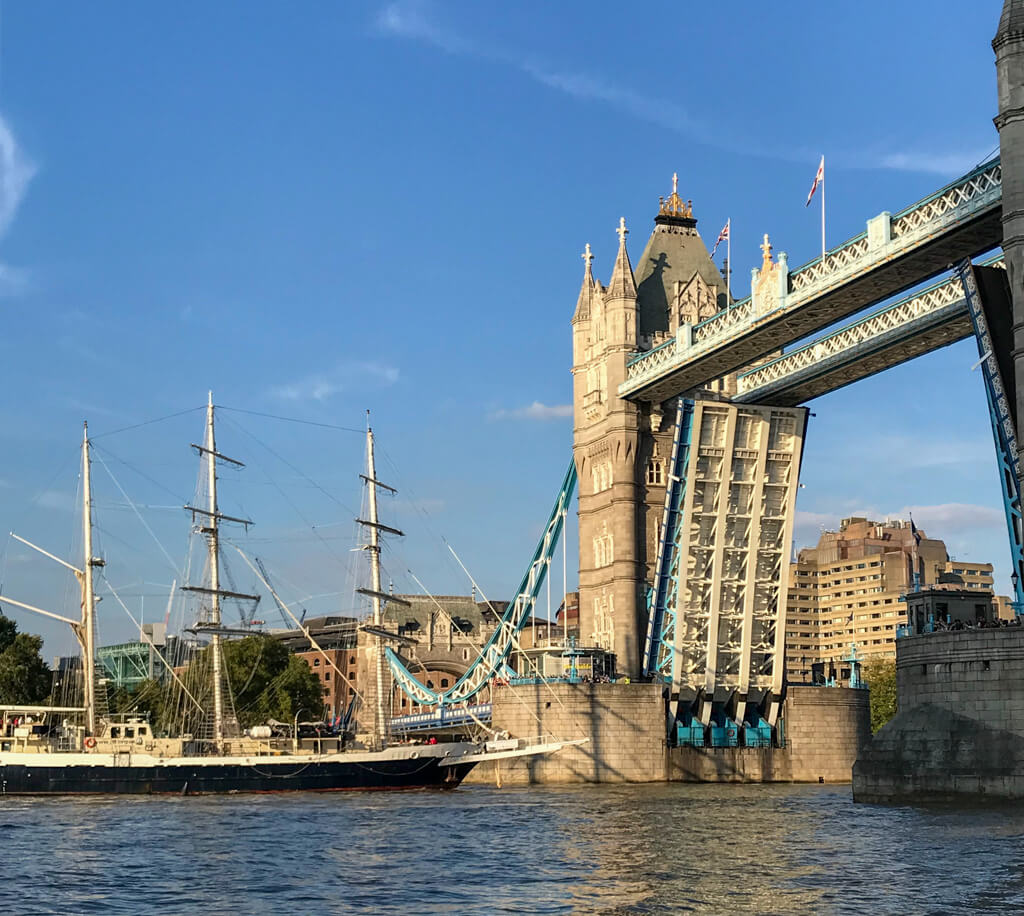
Shakespeare’s Globe theatre
Although not the original Globe theatre, this reconstruction does a good job of re-imagining an Elizabethan theatre experience. The open-air theatre has galleried seating and a standing area by the stage where tickets cost from £5. An second indoor playhouse means that performances can continue all year round.
HMS Belfast and Golden Hinde
A former WWII Royal Navy warship, HMS Belfast is moored on the south bank of the Thames by Tower Bridge. It is now a museum ship, operated by the Imperial War Museum.
More brave feats on the high seas are remembered on the replica Golden Hinde, docked on Bankside by London Bridge. Scene of many swashbuckling childrens’ parties, this little ship is also a stark reminder of the bravery of the Elizabethan crew, led by Sir Francis Drake, who sailed around the globe in the 1570s. This replica also completed a similar journey, without any modern refinements, 400 years later.
South Bank’s modern Historical Sites
Staying south of the river, if we head west we get to the South Bank. We’re hopping forwards in time here as this was the location for the Festival of Britain in 1951. This temporary exhibition was designed to celebrate British industry and culture after the turmoil of World War 2. It was built on a bombed site near Waterloo station and included one permanent structure, the Royal Festival Hall.
The Southbank Centre
The festival changed the whole character of this area. The Southbank Centre grew up around the concert hall and has become a cultural hub of the city. The London Eye is here too, a celebration of the Millennium. It’s one of the world’s tallest observation wheels with bird’s eye views of Westminster Palace, Big Ben and the Thames.
Historical Places in London’s West End
Now let’s leave the South Bank and cross Westminster Bridge, with its fabulous view of the Houses of Parliament. Here, north of the river again, we can step back in time into 18th century Westminster.
As centuries passed, and London evolved, the rich moved west to get away from the smell.
Seriously. Most industries were based in the east, close to the ports and the commercial centre of the City of London. The brickmakers and tanneries were dusty, smelly and smoky and it was a good idea to live upwind of them. The fear of plague was also ever present in people’s minds which was another reason to move to more rural locations.
Westminster was an attractive option, what with its Royal palaces, parks and government powerbase, so the wealthy built lavish homes nearby. From the 17th century the so-called West End that grew up near the Palace of Westminster was a commercial district that catered to the desires and demands of the affluent residents. It quickly became synonymous with leisure, shopping, entertainment and the London social season.
The West End is a loosely defined area that includes uber-smart Mayfair and regal St James’s, the shopping districts of Piccadilly, Regent’s Street and Oxford Street, London’s theatreland around Leicester Square and the fashionable residences of Marylebone, Fitzrovia and Bloomsbury. Many of the most elegant historical places in London are found in the West End.
Heritage Shopping in St James’s
Many of the streets of Mayfair still reflect the privileged and wealthy air that they did when they were first built. In St James’s Street you can find heritage shops like Berry Brothers and Rudd wine merchants which first opened in 1698 and has a Royal Warrant to supply the Royal family. Whilst on Piccadilly, three shopping arcades from Regency and Victorian times are still home to exclusive purveyors of luxury goods.
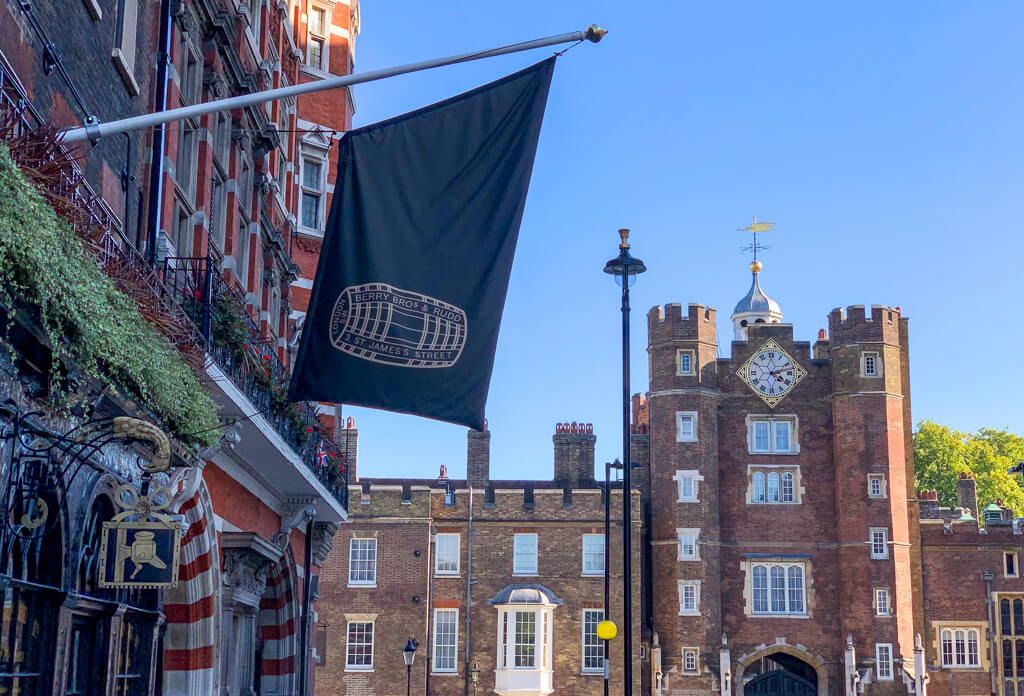
The British Museum
Bloomsbury has been a hub of culture and education since the 18th century. Home of universities, institutions and the British Museum it has been a magnet for writers, artists and intellectuals. The Museum has a mind-boggling global collection, and it’s also free. Not only that, the building itself, and its recent Great Court addition, is stunning. Check out nearby Russell Square with its landmark historic hotel and garden square.
Charles Dickens Museum
You can step back in time at the home of novelist Charles Dickens in Bloomsbury which is now a museum. His books entertained millions whilst also throwing a spotlight on social issues of his time. And A Christmas Carol helped to popularise festive traditions in Britain and the US.
Soho and Covent Garden
Soho and Covent Garden, closest to the City of London, were poorer areas back then though this isn’t the case anymore. Adjacent to Leicester Square and London’s theatres, today they are packed with restaurants, bars, clubs and fashionable shops.
Kensington’s key Historical Sites
Looking further West from Westminster you can see another royal residence. Kensington Palace is the childhood home of Queen Victoria. Her husband Albert was the mastermind behind the cultural growth of Kensington which, thanks to him, now boasts three world-class museums and the Royal Albert Hall. Unsurprisingly it became a very fashionable neighbourhood and has stayed that way.
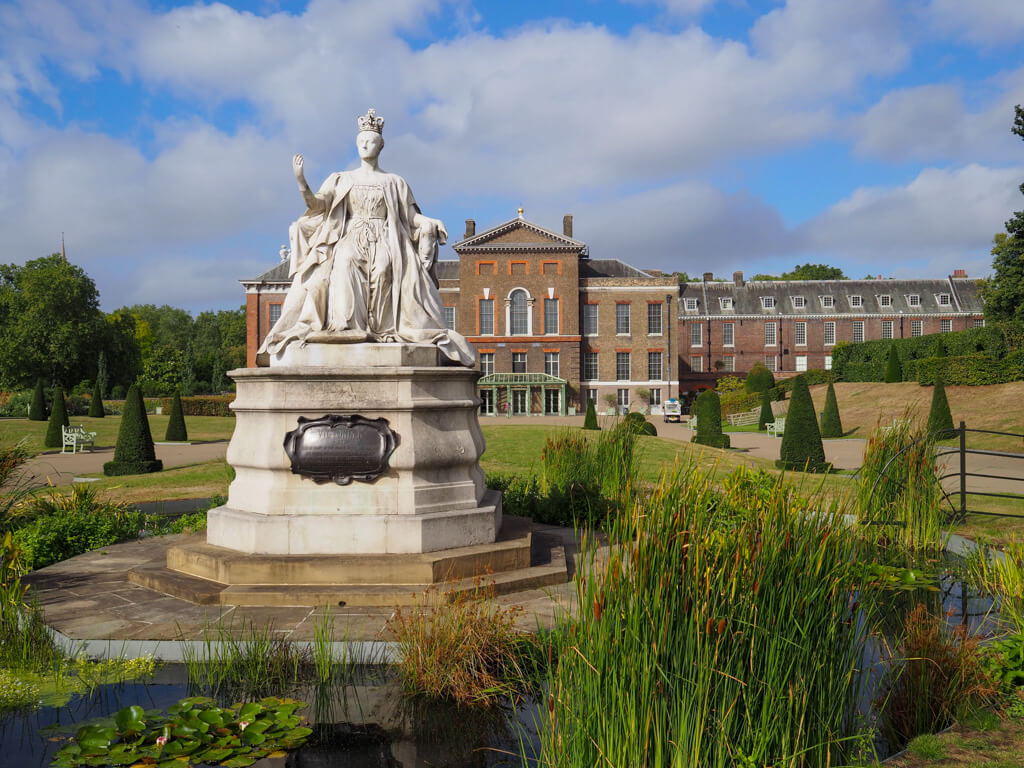
Kensington Palace and Kensington Gardens
Kensington Palace is now the London home of TRH the Prince and Princess of Wales and family. It is a working royal palace but historic areas are open to the public. It is one of the key historic places in London to add to your itinerary, paired with the Mary Poppins sunniness of an afternoon’s stroll on the gentle slopes of Kensington Gardens.
The handsome historic streets of Kensington are also fun to explore, and are especially pretty when the cherry blossom flowers in London in April.
Kensington’s Museums
With every taste catered for, the Big Three museums on Cromwell Road are must-see historical places in London if you’re a culture lover. The triumvirate of the Natural History Museum, Science Museum and Victoria and Albert Museum are all free to enter although temporary exhibitions come with an additional charge.
Historical Sites in North London
Back to the centre of London. If we look north of the West End we find no less than four major railway stations: Paddington to the west and then Euston, King’s Cross and St Pancras International. These are all useful to know about if you’re planning to travel around the UK or into Europe.
St Pancras station
Grade 1 listed, St Pancras station opened in 1868 with an extravagant Gothic Revival style hotel as its facade. It’s architect was Sir George Gilbert Scott, also famous for the Albert Memorial in Kensington, and he is said to have been inspired by Venetian architecture. The glamorous St Pancras Renaissance hotel is still a historical place in London that’s worth a look.
Little Venice
Just north of Paddington station is Little Venice, a pretty junction of canals overlooked by handsome Regency homes. Catch a river boat or walk east along the tow path to pass the north side of Regent’s Park and London Zoo, then on into Camden. The Canalway Cavalcade is a fun event in London in May.
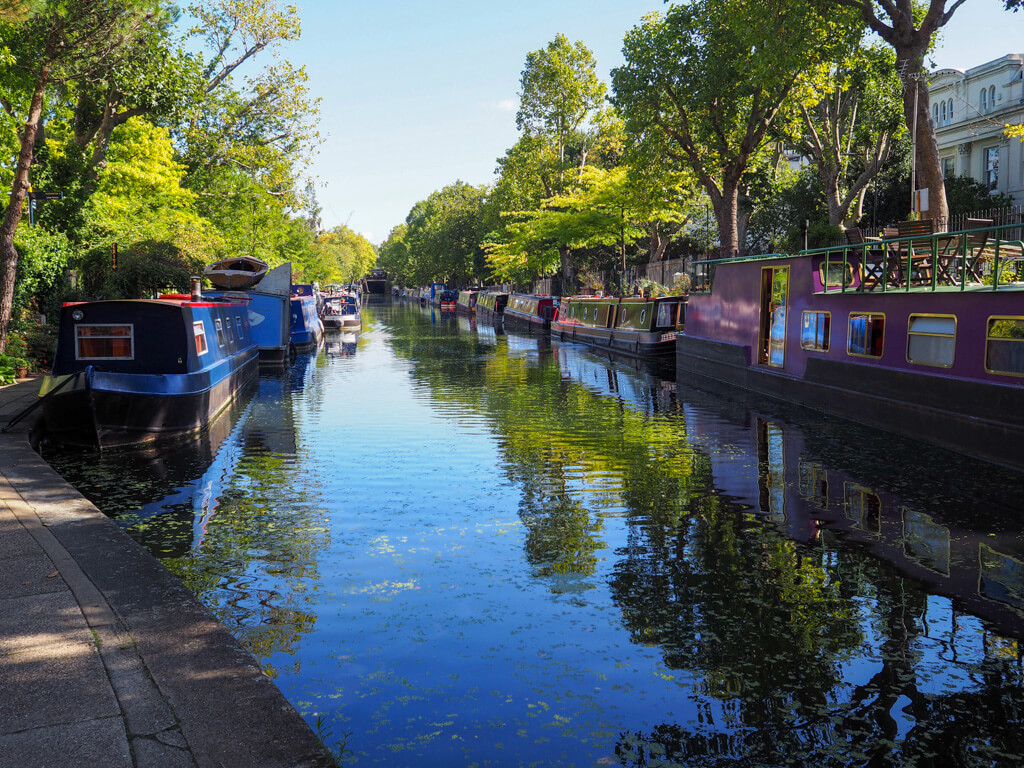
Camden Town
Old and new converge in Camden Town, famous for its edgy and idiosyncratic mix of markets on the sites of old stables and warehouses close to the canal. Its social history oozes from every pore. Since the 1960s Camden has been the scene of music pioneers, alternative fashion and subcultures from mods to goths.
Historical Places in London’s East End
Heading south now, to the east of the City of London, is the area known as the East End. Close to the docks, and potential employment, for centuries this was the first stop for migrants to London. These were industrial neighbourhoods which suffered much poverty and overcrowding as well as bombing during World War II.
Shoreditch and Spitalfields are both districts in the East End with a rich and diverse past. Recently gentrified, they now draw in creative businesses, and are fashionable with young Londoners and visitors too.
Several regeneration projects have developed in the East End since the Royal Docks closed in 1980. City airport opened in 1986, whilst Canary Wharf, on the Isle of Dogs, has become London’s second business and financial district.
Museum of London Docklands
A sugar warehouse transformed into a museum of the rich history of London’s riverfront and former docks. It records centuries of life around London’s port.
Dennis Sever’s House
A fictional Hugenot silk weaver’s home from the 18th century, trapped in time. This is a theatrical experience, immersive and unique. https://dennissevershouse.co.uk/
Historical Places in Greenwich London
Hopping over the Thames from the East End, you’ll see out to the south east, the O2 Arena, formerly the Millennium Dome. West of this lies the town of Greenwich with its UNESCO World Heritage site: the beautiful complex of historic maritime buildings, the Royal Museums Greenwich.
Royal Observatory
Arguably one of the most significant historical places in London, this is the location of the line of Longitude 0°. The Prime Meridian of the World is right here. You can stand on the reference line for Greenwich Mean Time that divides the Eastern and Western hemispheres.
National Maritime Museum
A free museum featuring stories of trade, piracy, exploration and life in the Royal Navy at the time of Nelson. Free to enter.
The Queen’s House and tulip stairs
Ahead of its time in the 17th century, this house designed by Inigo Jones is a classical beauty with an innovative and awesome spiralling staircase. Free to enter too.
Old Royal Naval College and Painted Hall
Designed by Sir Christopher Wren as a naval hospital which later became a college. The magnificent buildings with Thames views include ‘Britain’s Sistine Chapel’ – a stunning baroque ceiling in the Painted Hall which took nineteen years to complete.
Cutty Sark
This is the famous Victorian tea clipper that speeded its cargo from China to England. Imagine life on board, take afternoon tea under the hull or even climb the rigging!
Historical Places on the outskirts of London
Two very famous historical sites in London are actually just outside the city but still worth visiting on a half day or full day trip.
Hampton Court Palace
Visit Tudor England when you step back in time at the Court of King Henry VIII. This magnificent 500 year old palace includes Henry’s apartments and kitchens and the later Georgian state rooms.
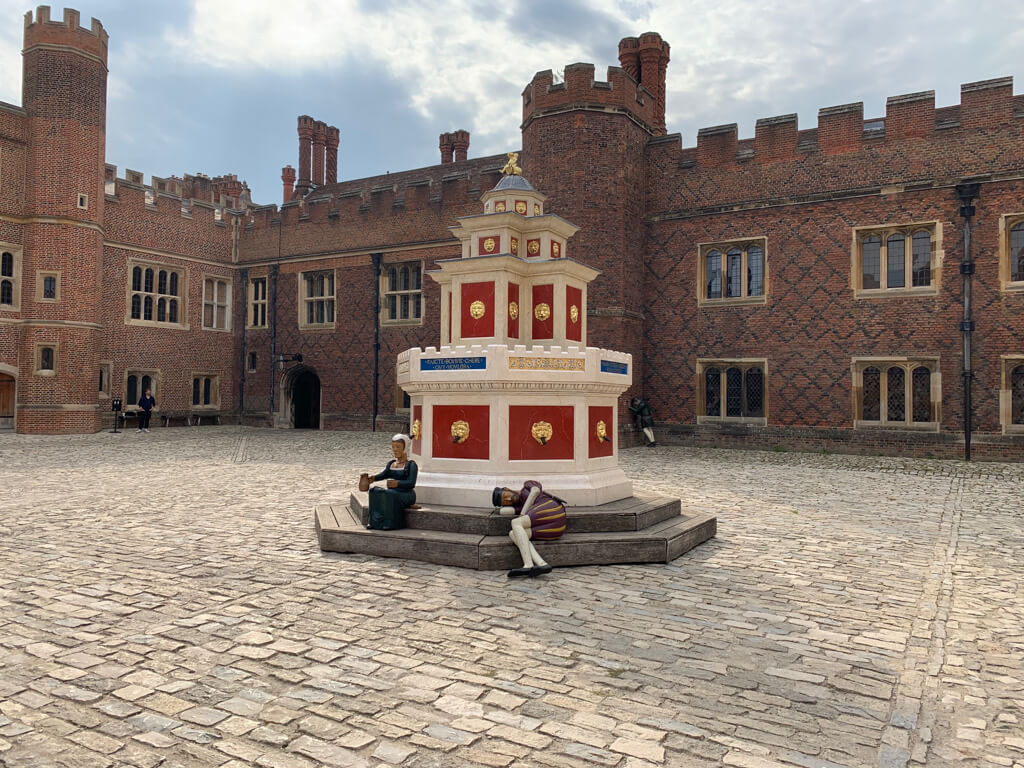
Windsor Castle
Windsor Castle, like the Tower of London, is the work of William the Conqueror, the man responsible for two of the most enduring of London’s historical sites. The castle and its magnificent Long Walk make a wonderful half or full day outing from London.
Please note that all visitor information here is for guidance only. Please check the relevant websites for the most up to date information eg. accommodation details, tickets, entrance requirements, opening times etc.
WHAT TO READ NEXT
If you’re planning to visit some of the historical places in London you could save money with a pass that gives you free entry to many attractions as well as tours. Check here to discover whether The London Pass is worth it for your itinerary.
Now you know how many amazing historic sites there are to see in London, check out this 2 Day London Itinerary.
If you’re planning a cultural visit to London you’ll enjoy the gardens, cafe and hotels in Russell Square Bloomsbury, close to the British Museum.
Enjoy London like the locals do with some non-touristy London activities like seeing the sights from a London bus or discovering London’s villages.
Explore the magnificent Long Walk at Windsor Castle, then stop for lunch or a drink at an historic Windsor pub.
History lovers and concert goers will enjoy the historic pubs near the Royal Albert Hall in Kensington.

About the author Nancy Roberts is a former women’s magazine editor and writer. She lives in London and is mum to two 20-something boys. In Map&Family she shares info and inspiration for curious travellers: singles and couples as well as families travelling with teens and young adults.
All photos are all rights reserved. Please do not reproduce these photos without prior written permission

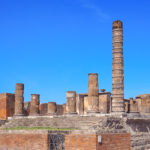
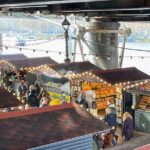
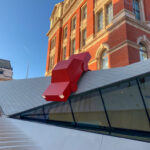
Leave a Reply